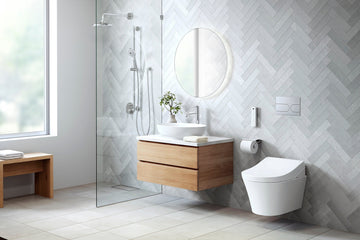In our fast-evolving world, technology is dramatically reshaping the landscape of healthcare, particularly in how we care for elderly individuals. Among these innovations, toilet monitoring for elderly patients emerges as a significant advancement. The safety and dignity of older adults are paramount, and implementing toilet monitoring systems is an essential strategy in meeting these needs. In this article, we will explore the importance of toilet monitoring, its numerous benefits, and how it can transform elderly care.

The Necessity of Toilet Monitoring
The elderly population is expanding at an extraordinary pace, presenting challenges in providing adequate care. One critical aspect often neglected in elderly care is restroom safety. Accidents and falls in the bathroom are alarmingly frequent among seniors, sometimes resulting in severe injuries. By incorporating toilet monitoring systems, caregivers can effectively oversee the bathroom activities of elderly patients, significantly lowering the chance of accidents while ensuring their safety.
Embracing Technology in Toilet Monitoring
Technology is a cornerstone of contemporary healthcare, and toilet monitoring is no exception. These systems harness sensors, cameras, and smart devices to monitor the movement and behavior of elderly patients in the restroom. By analyzing real-time data, caregivers can identify any unusual patterns or signs of distress, allowing for timely intervention. This proactive strategy not only helps prevent accidents but also reassures both patients and their families.
Advantages of Toilet Monitoring for Elderly Patients
Implementing toilet monitoring systems in elderly care offers numerous benefits. Firstly, it enhances patient safety by reducing the risk of falls and other accidents. Secondly, it fosters independence and dignity, enabling elderly individuals to use the restroom without continuous physical supervision. Furthermore, toilet monitoring systems can provide critical insights into a patients health, such as variations in urinary patterns or indications of incontinence. This information can be essential for early diagnosis and swift intervention.
Challenges and Important Considerations
While the advantages of toilet monitoring systems are clear, certain challenges and considerations must be addressed. Privacy concerns and data security are significant issues, given that sensitive information is gathered and analyzed. It's imperative these systems meet privacy regulations and ensure the confidentiality of patient data. Additionally, the financial investment required for implementing toilet monitoring systems may deter some healthcare facilities. Nevertheless, the long-term benefits associated with improved patient outcomes and reduced healthcare expenses make it a valuable investment.
The Future of Elderly Toilet Monitoring
The outlook for toilet monitoring for elderly patients is bright. As technology continues to progress, we can anticipate even more advanced systems that boast enhanced features and functionalities. For example, integrating artificial intelligence may enable predictive analytics that identifies potential issues before they become critical. Moreover, advancements in wearable technology are set to facilitate seamless monitoring while preserving privacy.
For further information on the latest trends in toilet technology, consider checking out articles such as The Latest Innovations in Toilets, which highlights how these developments are influencing the future of elderly care.
Conclusion
In summary, toilet monitoring for elderly patients marks a significant leap forward in elderly care. By marrying technology with compassionate care, we can better ensure the safety, dignity, and autonomy of our elderly population. As we continue to embrace innovation, it remains essential to tackle the challenges and ethical considerations that accompany this progress. Our ultimate aim is to create a safe and supportive environment for elderly individuals, enabling them to enjoy their golden years with dignity and peace of mind.

FAQ
What is toilet monitoring for elderly patients?
Toilet monitoring for elderly patients refers to utilizing technology to observe and manage bathroom activities, promoting safety and preventing accidents.
How does toilet monitoring enhance patient safety?
Toilet monitoring systems deploy sensors and cameras to identify unusual behaviors or signs of distress, allowing caregivers to act quickly, thus preventing accidents.
What privacy concerns are associated with toilet monitoring?
The privacy concerns relate to the collection and analysis of sensitive data. Ensuring compliance with privacy laws and maintaining the security of data is vital.
This article contains affiliate links. We may earn a commission at no extra cost to you.






